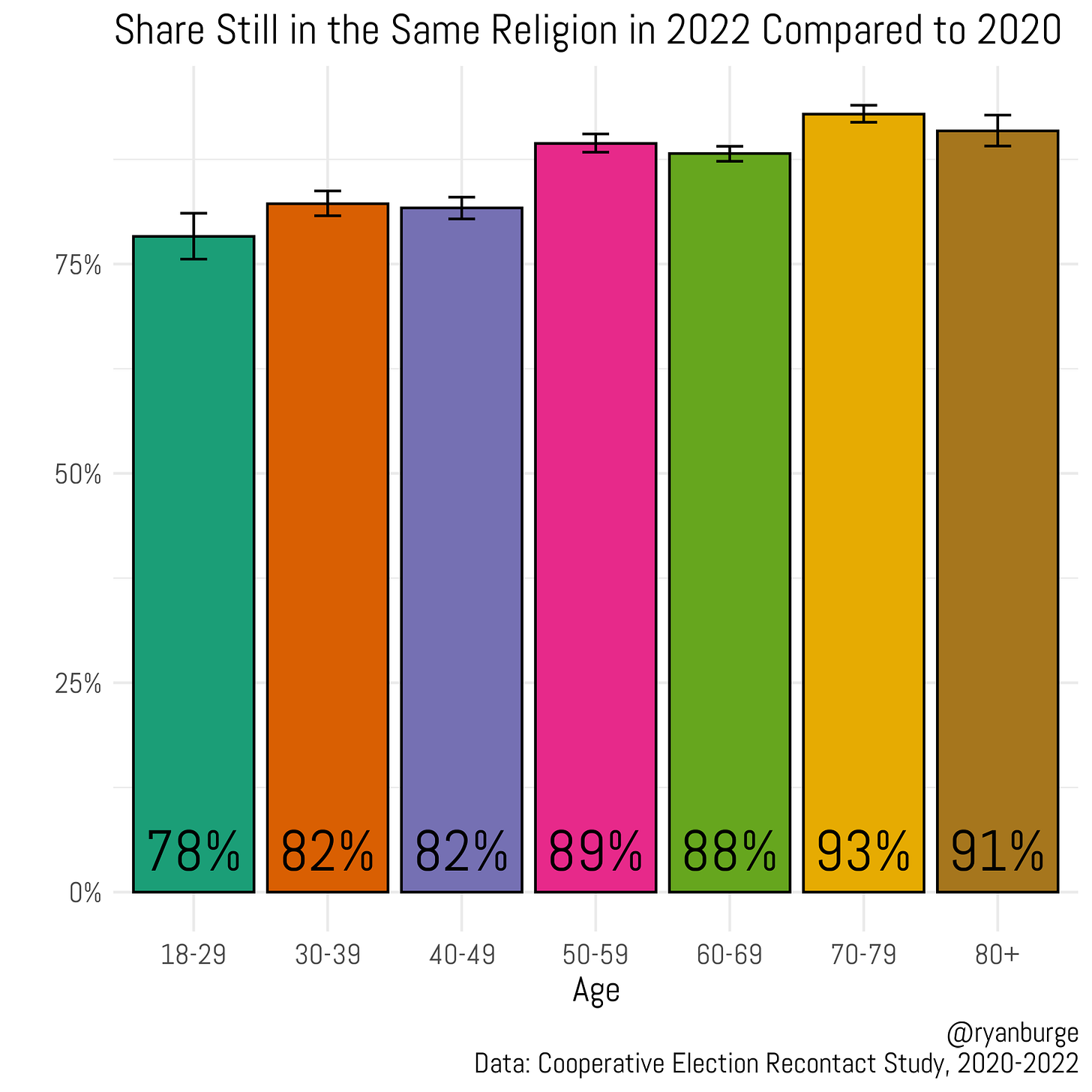Are Young Women Leaving Religion Faster than Young Men?
Panel data offers another look at this emerging trend
Here’s what I think the value of pursuing a PhD is - it gives someone time to think about a single topic a whole lot. I know that sounds so incredibly basic and simplistic, but in my experience there’s no substitute for just rolling an idea over in your head for a period of years. I picture that process like polishing a diamond. It starts out jagged, misshapen, and pretty dull. But the more it gets tumbled around in my brain, those rough edges get knocked off and the imperfections are removed. For me the ultimate outcome of this process is that you arrive at a well thought through idea that is academically defensible but also understandable to a general audience.
Women are more religious than men, right?
If you walked into my church last weekend, you would be struck by several things. The first is how few people are in the pews each Sunday. We are lucky to get to double digits many weeks. The second is how few men there are among the faithful. An average Sunday may have eight women and four men. There have been weeks where there are two men.
Anyone who has followed this newsletter over the last couple of years knows that it has been largely focused on the intersection of religiosity and gender in the United States. I’ve already described a really consequential finding - young men are now as religious as young women. That’s a really big shift given that social science has always just assumed that women are slightly more religious than men. Okay, so that’s the headline - it’s the ‘what’ of the equation. I have been poking around the idea of ‘why’ for at least a year now. And this is my medium for thinking out loud. I’m glad that you all get to come along for the ride (and I hope you are enjoying this, too).
This is another entry into that larger discourse, but this one emerges from a dataset that is pretty well suited to shed some new light onto the conversation. It’s a panel survey from the Cooperative Election Study. They collected responses from 61,000 people in 2020, then recontacted 11,000 of them again in 2022. So, we can track religious change at the individual level. As you can probably guess, gender is a huge factor in this analysis and I’m throwing age into the mix now, too.
Let’s start with a simple retention metric. This is the share of each group that reported the same religious affiliation in 2020 and 2022.
I would have assumed that retention was higher for older folks and lower for the youngest adults in the data. I was pleased to see that this survey data confirmed my hunch. Among those in the sample who were between the ages of 18 and 29, 78% did not switch religious traditions over a two year window. It rose to 82% for those between 30 and 49 years old, then edged up a little more from there. It’s fair to say that retention hits a ceiling at around 50 years old. There’s a bit of religious volatility among people between 18 and 49, but then it really settles down for older Americans.
Now, let’s add gender to the mix. This is the proportion of people who indicated the same religious tradition in both the 2020 and 2022 surveys. The first thing worth pointing out is that there’s a small, but noticeable retention gap among the youngest adults in the sample. Among men aged 18-35, 80% were still in the same religious tradition. Among younger women, it was only 76%. That’s some more evidence of that bigger trend of younger women tending to reevaluate their religion in early adulthood.
The only other comparison that is statistically significant is among folks in the sample who were between the ages of 45 and 54. Again, women are about five points more likely to switch religions than men. The other age buckets don’t really tell us a whole bunch when it comes to a religious retention gap by gender. But I do think it’s fair to say from these results that women are slightly less likely to maintain their religion than their male counterparts.
The overall retention rate is a good place to start, but I wanted to go one layer below that by looking at individual religious traditions.





